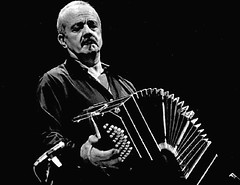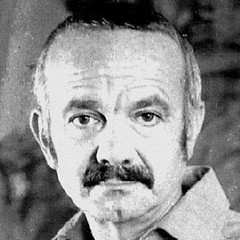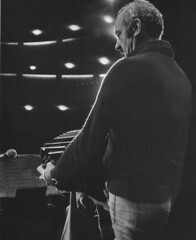Here
is a brief timeline of Argentina's history!
1516- Explorer Juan Dìaz de
Solis discovers Rio de la Plata. Spain later claims it and the surrounding
region.
1776- Spain creates a large colony called the Viceroyalty of the Rio de la
Plata. It covers present-day Argentina, Uruguay, Paraguay and southern Bolivia.
Buenos Aires is named its capital.
1810- On May 25, armed citizens of Buenos Aires kick out the Spanish Viceroy
and establish a government.
1816-1817- Argentina declares its independence from Spain. José de San Martín
defeats Spanish forces in Chile.
1862- Alberto Williams is
born
1880’s- Argentina becomes a major exporter of wool, wheat and beef. Soon, it
becomes the richest nation in Latin America.
1890- Birth of Carlos Gardel
1897- Birth of Osvaldo Fresedo
1905- Osvaldo Pedro Pugliese is born
1908- Héctor Roberto Chavero Aranburu aka
Atahualpa Yupanqui is born
1912- Carlos Guastavino is
born
1916- Birth of Alberto Ginastera
1930- Golden age of Tango
1932- Lalo Schifrin was
born
1934- Birth of Alicia
Terzian
1935 -death of Carlos Gardel
1943- A group of military officers seizes power.
1946- Colonel Juan Perón is elected president. He promises higher wages and
better working conditions. His wife, Eva "Evita" Perón, is in charge
of labor relations. She becomes a powerful political figure.
1950s- Popularity of mambo and Latin jazz
1952 Alberto Williams dies
1960s- New tango popularized by Ástor Piazzolla
1980’s- In the 1980s, South American migrants from Peru and Bolivia brought the
so-called tropical music to higher prominence in Argentina, a mixture of
Cumbia& Chicha (Peruvian rhythm) and Bolivian Cumbia, but originally from
Colombian, folk rhythms, and Caribbean styles.
1982- Argentina goes to war with Britain over control of the Falkland Islands.
Argentina’s military government collapses, ending a period of repression.
1983- Death of Alberto Ginastera
1984- Death of Osvaldo Fresedo
1991- The government makes the peso equal to the value of the U.S. dollar. This
helps to stabilize the Argentine economy.
1992- Atahualpa Yupanqui dies
1995- Osvaldo Pedro Pugliese dies
2001- Thousands protest soaring unemployment and increased poverty. On December
20, President Fernando de la Rua resigns. Congress names a new president,
Eduardo Duhalde.
2007- Cristina Fernández de Kirchner becomes the first woman to be elected
President. She succeeds her husband, Nestor Kirchner.
2009- Argentina claims a vast territory including the ocean as far as
Antarctica and islands that are governed by the British. Britain refuses to
negotiate its claims to the territory.
Atahualpa Yupanqui was born Héctor Roberto Chavero Aranburu in Pergamino, Buenos Aires on He is a composer, poet, guitarist and singer.Violet Parra along with Yupanqui are considered the founders of the folk music in Latin America. They are also responsible for a new movement called nueva canción (new song). This movement is dedicated to the rediscovery of rural folk Music.
He traveled all around Argentina collecting popular songs, saying, and poetry to incorporate in his own music. He wanted to collect and sing the forgotten arts (cantar artes olvidadas) by living a humble life and expierencing life as paisanos (poor people from the countryside) lived. He did this for over 30 years. In 1926 he wrote his first song titled Caminito del Indio. His style included using poetic forms and rhythms of rural Argentina and a distinctive guitar style.
In 1931, he took part in Kennedy brothers uprising against the de facto government of Jose Felix Uriburu. After the uprising failed, he was forced to seek refuge in another country. He returned to Argentina in 1934 .He was forced into excile three times during his lifetime; in 1932, 1949, and again in 1967. His songs were seen as "protest songs" by the goverment. They showed a committed perspective to the life and experiences of ordinary people.
He traveled to Europe in 1950 captivated Edith Piaf, who was a french singer and cultural icon. She encouraged his concerts in Paris. He moved to Paris in 1967 largely due to his problems with the Argentine military dictatorship. He is much admired in France; some of his songs and poems became part of the curriculum in primary schools. He is considered one of the fundemental folklorists and guitarists of the century in Latin America. He inspired a whole generation to follow in this foot steps. He died in France in 1992.

 Discography
Sources:
Pablo Vila. "Yupanqui, Atahualpa." Grove Music Online. Oxford Music Online. 11 Mar. 2012 <http://www.oxfordmusiconline.com/subscriber/article/grove/music/49864>.
http://en.wikipedia.org/wiki/Atahualpa_Yupanqui
Discography
Sources:
Pablo Vila. "Yupanqui, Atahualpa." Grove Music Online. Oxford Music Online. 11 Mar. 2012 <http://www.oxfordmusiconline.com/subscriber/article/grove/music/49864>.
http://en.wikipedia.org/wiki/Atahualpa_Yupanqui
Osvaldo Pedro Pugliese was born in Buenos Aires on December 2, 1905. He was a tango pianist, bandleader and composer. He trained at a private conservatory in Buenos Aires and started as a cinema pianist. He realised that was'nt for him and soon after found a place in tango bands. Some other conductors he worked for included Roberto Firpo, Pedro Maffia, and Pedro Laurenz.
In 1929 jointly led the Vardaro-Pugliese Sextet, one of the most distinguished ensembles of the 1930s, and only in late 1939. After he formed his own first band in 1943. They made more than 600 recordings. He was very accomplished as a piono player which contributed greatly to his band. The band toured around the world including the Soviet Union, China, Mexico, Cuba, and Japan. He also made a few notable appearances on French television in 1984. Pugliese played an impresive concert in the Teatro Colón, Buenos Aires in December 1985, soon after his 80th birthday. Pugliese was a lifelong communist and was imprisoned several times for his beliefs by President Juan Domingo Perón. He was a fruitfuland sophisticated composer having once been described as the "Wanger of Tango". His arrangements pushed the ‘evolutionist’ trend in tango music to its limits. Recuerdo and La yumba are two of his most famous tangos. He died in Buenos Aires on July 24,1995.
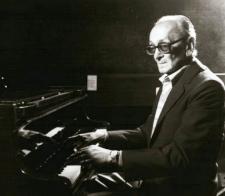 Discography
Sources:
Simon Collier. "Pugliese, Osvaldo." Grove Music Online. Oxford Music Online. 11 Mar. 2012 <http://www.oxfordmusiconline.com/subscriber/article/grove/music/52564>.
http://en.wikipedia.org/wiki/Osvaldo_Pugliese
Discography
Sources:
Simon Collier. "Pugliese, Osvaldo." Grove Music Online. Oxford Music Online. 11 Mar. 2012 <http://www.oxfordmusiconline.com/subscriber/article/grove/music/52564>.
http://en.wikipedia.org/wiki/Osvaldo_Pugliese
Alicia Terzian- was born in Cordoba on July 1st 1934 she is a musicologist and a conductor of American decent. in 1958 Alicia graduated from the national conservatory in Buenos aires and she also won a gold medal in 1959. At the lazzaros monastery , Alicia studied American sacred music with leoncio dayan.while in Argentina and in France Alicia had won many honours and had received many commissions from Argentina,London,new York,Zagreb,Grenoble,Salzburg,France and Buenos Aires. in 1978 Alicia fo. In 1978 she" founded Encountros Internacionales de Música Contemporánea to introduce international audiences to Latin American, and specifically Argentine, avant-garde music; under her direction, the group has participated in about 200 festivals". Alicia is a professor at the national consevatory, here she is a composer and has lectured on contemporary music.
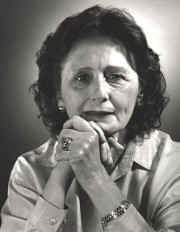
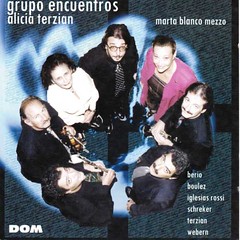
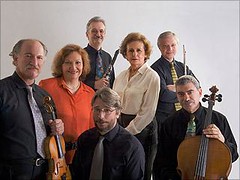 discography
''Stage: Hacia la luz (ballet), 1965 [arr. of orch work, Movimientos contrastantes]; Génesis (ballet), with tape, 1972; Achtamar (ballet), 1979; Bestiela (theatre music, C. de Marigny), 1981; El Dr Brecht en el Teatro Colón (theatre music, A. Castillo), 1981; El otro Judas (theatre music, Castillo), 1981; El enano (theatre music, L. Lagerkvist), 1984 Orch: Vn Conc., 1955; El gris de la noche, str orch, cymbals, 1960–70; Movimientos contrastantes, 1964; Proagon, vn, str, 1969–70; Carmen criaturalis, hn, str, vib, cymbals, 1969–71; Narek, 1v, chbr orch, tape, 1979; Voces, 1v, ens, tape, 1979–82; Y cuya luz es como la profunda oscuridad, chbr orch, M.A. Vidal’s paintings, 1982; Y la luz se oira, chbr orch, 1982; Amores, 1v, ens, 1984–7; Off the Edge, 1v, orch, 1992; Les yeux fertiles, 1v, ens, tape, 1996; Adios a Brahms, 1997 Other inst: Danza criolla, pf, 1954; Elegia, vc, pf, 1954; Toccata, pf, 1954; 3 piezas, str qt, 1955; Canción y danza, gui, 1955; Juegos para Diana, pf, 1956–65; Cuaderno de imágenes, org, 1964; Atmósferas, 2 pf, 1969; Shantiniketan, fl, 1970; Yagua-Ya Yuca, perc, 1992; Frémissements, org, tape, 1996; Oda a Vahan, pf, tape, 1996; Tango Blues, pf, 1999 Vocal (1v, pf, unless otherwise stated): 3 canciones (Byron), 1954; 3 retratos (F. García Lorca), 1954; Canciones para niños (Lorca), 1956; Tristeza (Byron), 1956; 3 madrigales (E. Prados), SSA, 1958; Padre nuestro y Ave Maria, SATB, 1966; Embryo, 1v, va, 1969 Multimedia, el-ac: Atmósferas, tape, 1970; Musidanzavisíon, tape, slides, lasers, sculptures, paintings, improvised dance, 1970; Sinfonía visual en 2 movimientos, tape, slides, 1972; Sinfonía apocalíptica, tape, 1978–80; Canto a mí misma, str, digital delay, digital transposition in real time, sonorous system in hall, 1986 [str, tam-tam, sound transformation, 1993]; Buenos Aires me vas a matar, pf, actors, tape, 1990''
Sources:
discography
''Stage: Hacia la luz (ballet), 1965 [arr. of orch work, Movimientos contrastantes]; Génesis (ballet), with tape, 1972; Achtamar (ballet), 1979; Bestiela (theatre music, C. de Marigny), 1981; El Dr Brecht en el Teatro Colón (theatre music, A. Castillo), 1981; El otro Judas (theatre music, Castillo), 1981; El enano (theatre music, L. Lagerkvist), 1984 Orch: Vn Conc., 1955; El gris de la noche, str orch, cymbals, 1960–70; Movimientos contrastantes, 1964; Proagon, vn, str, 1969–70; Carmen criaturalis, hn, str, vib, cymbals, 1969–71; Narek, 1v, chbr orch, tape, 1979; Voces, 1v, ens, tape, 1979–82; Y cuya luz es como la profunda oscuridad, chbr orch, M.A. Vidal’s paintings, 1982; Y la luz se oira, chbr orch, 1982; Amores, 1v, ens, 1984–7; Off the Edge, 1v, orch, 1992; Les yeux fertiles, 1v, ens, tape, 1996; Adios a Brahms, 1997 Other inst: Danza criolla, pf, 1954; Elegia, vc, pf, 1954; Toccata, pf, 1954; 3 piezas, str qt, 1955; Canción y danza, gui, 1955; Juegos para Diana, pf, 1956–65; Cuaderno de imágenes, org, 1964; Atmósferas, 2 pf, 1969; Shantiniketan, fl, 1970; Yagua-Ya Yuca, perc, 1992; Frémissements, org, tape, 1996; Oda a Vahan, pf, tape, 1996; Tango Blues, pf, 1999 Vocal (1v, pf, unless otherwise stated): 3 canciones (Byron), 1954; 3 retratos (F. García Lorca), 1954; Canciones para niños (Lorca), 1956; Tristeza (Byron), 1956; 3 madrigales (E. Prados), SSA, 1958; Padre nuestro y Ave Maria, SATB, 1966; Embryo, 1v, va, 1969 Multimedia, el-ac: Atmósferas, tape, 1970; Musidanzavisíon, tape, slides, lasers, sculptures, paintings, improvised dance, 1970; Sinfonía visual en 2 movimientos, tape, slides, 1972; Sinfonía apocalíptica, tape, 1978–80; Canto a mí misma, str, digital delay, digital transposition in real time, sonorous system in hall, 1986 [str, tam-tam, sound transformation, 1993]; Buenos Aires me vas a matar, pf, actors, tape, 1990''
Sources:
Şahan Arzruni. "Terzian, Alicia." Grove Muwasic Online. Oxford Music Online. 10 Mar. 2012 <http://www.oxfordmusiconline.com/subscriber/article/grove/music/45163>.
Carlos Guastavino was born in Santa Fe, Argentina, in April 5 1912 and died in Santa Fe, Argentina, Oct 29 2000.Carlos Gustavino- was a pianist from Argentina, some of his piano teachers were Esperanza lothringer and dominga laffei. besides studying the piano Cars also studied engineering in the university of litoral. Carlos received a grant to study at the national conservatory but he decided to take lessons from Athos palma and Rafael Gonzalez , by the mid 1940s Carlos guastavinos music gained local and international claim because of his performances and other artist that helped Carlos. Carlos guastavino did stay in London for two years at the British council, later performed his music in Ireland and great britian. Carlos guastavino traveled alot while on tour, he had gone to Latin America and to china in 1956. in 1960 Carlos did more teaching in Buenos Aires and compositions later on Carlos became depressed because of mothers death , in 1987 he decided to start writting again because he was encouraged by Carlos vilo. while working with Carlos vilo Carlos guastavinos arranged numerous works for vilos group later retired in 1992.
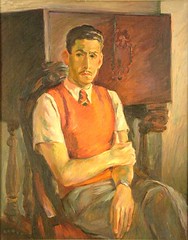

 discography
'' solo voice and piano: Arroyito serrano (Guastavino), 1939; Gratitud (Guastavino), 1939; Propósito (Guastavino), 1939; Balada (G. Mistral), 1940, unpubd, rev. 1989; Campanas (F. Silva), 1941; Piececitos (Mistral), 1941; Pueblito, mi pueblo (Silva), 1941; Se equivocó la paloma (R. Alberti), 1941; Manitas (Mistral), 1942, unpubd, rev. 1989; Por los campos verdes (J. de Ibarbourou), 1942; La rosa y el sauce (Silva), 1942; Anhelo (D. Zerpa), 1942; El vaso (Mistral), 1942; Cita (L. Varela), 1943; Paisaje (Silva), 1943; Riqueza (Mistral), 1943; Seis canciones de cuna (Mistral), cycle, 1943; Las nubes (L. Cernuda), cycle of 3 songs, 1944; 7 canciones (R. Alberti), cycle, 1944; Déjame esta voz (Cernuda), 1944; 3 canciones (Cernuda), cycle, 1945; La nube (M. Altolaguirre), 1945, unpubd, rev. 1989; El prisionero (anon.), 1947; Canción de Navidad (Silva), 1947; Esta iglesia no tiene (P. Neruda), 1948 4 canciones argentinas (anon.), cycle, 1949; 3 canciones (J. Iglesias de la Casa), cycle, 1950; Sonetos del ruiseñor (Varela), S, fl, cl, pf, 1951; Siesta (Silva), 1953; El labrador y el pobre (anon.), 1954; Canción de Navidad no.2 (C. Vicent [Guastavino]), (1955); La primera pregunta (El adolescente muerto) (N. Cortese), 1956; Ombú (N. Mileo), 1956, rev. 1989; Mi canto (Mileo), 1956; Los días perdidos (A.M.C. Aguirre), 1961; Soneto a la armonía (Aguirre), 1962; Milonga de dos hermanos (J.L. Borges), 1963; La tempranera (L. Benarós), 1963; Zamba del quiero (I. Malinov), 1964; Severa Villafañe (Benarós), 1964; Adiós quebrachito blanco (A. Yupanqui) (1964); Noches de Santa Fe (G. Eizenberg) (1964); Ojos de tiempo (A. García) (1964); Romance de la Delfina (Eizenberg) (1964) Elegía para un gorrión (García), 1965; En el pimpollo más alto (Benarós), 1965; Ay! Que el alma (Benarós), 1965; 4 canciones coloniales (Benarós), cycle, 1965; En el río feliciano (anon.); 15 canciones escolares (Benarós), cycle, (1965); Romance de José Cubas (Benarós), 1965; En la mañana rubia (Yupanqui) (1965); Yo, maestra (García) (1965); A un árbol (L. Furlain), 1966; Canción de cuna del Chacho (Benarós), 1966; 12 canciones populares (Benarós, A. Vázquez, Eizenberg, H.L. Quintana, García, Yupanqui), cycle (Buenos Aires, 1968); Edad del asombro (Quintana), cycle of 3 songs (1968); Flores argentinas (Benarós), cycle of 12 songs, 1969; Los ríos de la mano (J. Pedroni), cycle of 10 songs, 1973; Canciones del alba (Benarós), cycle of 4 songs, 1973; Pájaros (Benarós), cycle of 10 songs, 1974; 4 sonetos de Quevedo (F. de Quevedo y Villegas), cycle, 1975; Familia (M.A. Romero), 1988; Yegua (Romero), 1988''
discography
'' solo voice and piano: Arroyito serrano (Guastavino), 1939; Gratitud (Guastavino), 1939; Propósito (Guastavino), 1939; Balada (G. Mistral), 1940, unpubd, rev. 1989; Campanas (F. Silva), 1941; Piececitos (Mistral), 1941; Pueblito, mi pueblo (Silva), 1941; Se equivocó la paloma (R. Alberti), 1941; Manitas (Mistral), 1942, unpubd, rev. 1989; Por los campos verdes (J. de Ibarbourou), 1942; La rosa y el sauce (Silva), 1942; Anhelo (D. Zerpa), 1942; El vaso (Mistral), 1942; Cita (L. Varela), 1943; Paisaje (Silva), 1943; Riqueza (Mistral), 1943; Seis canciones de cuna (Mistral), cycle, 1943; Las nubes (L. Cernuda), cycle of 3 songs, 1944; 7 canciones (R. Alberti), cycle, 1944; Déjame esta voz (Cernuda), 1944; 3 canciones (Cernuda), cycle, 1945; La nube (M. Altolaguirre), 1945, unpubd, rev. 1989; El prisionero (anon.), 1947; Canción de Navidad (Silva), 1947; Esta iglesia no tiene (P. Neruda), 1948 4 canciones argentinas (anon.), cycle, 1949; 3 canciones (J. Iglesias de la Casa), cycle, 1950; Sonetos del ruiseñor (Varela), S, fl, cl, pf, 1951; Siesta (Silva), 1953; El labrador y el pobre (anon.), 1954; Canción de Navidad no.2 (C. Vicent [Guastavino]), (1955); La primera pregunta (El adolescente muerto) (N. Cortese), 1956; Ombú (N. Mileo), 1956, rev. 1989; Mi canto (Mileo), 1956; Los días perdidos (A.M.C. Aguirre), 1961; Soneto a la armonía (Aguirre), 1962; Milonga de dos hermanos (J.L. Borges), 1963; La tempranera (L. Benarós), 1963; Zamba del quiero (I. Malinov), 1964; Severa Villafañe (Benarós), 1964; Adiós quebrachito blanco (A. Yupanqui) (1964); Noches de Santa Fe (G. Eizenberg) (1964); Ojos de tiempo (A. García) (1964); Romance de la Delfina (Eizenberg) (1964) Elegía para un gorrión (García), 1965; En el pimpollo más alto (Benarós), 1965; Ay! Que el alma (Benarós), 1965; 4 canciones coloniales (Benarós), cycle, 1965; En el río feliciano (anon.); 15 canciones escolares (Benarós), cycle, (1965); Romance de José Cubas (Benarós), 1965; En la mañana rubia (Yupanqui) (1965); Yo, maestra (García) (1965); A un árbol (L. Furlain), 1966; Canción de cuna del Chacho (Benarós), 1966; 12 canciones populares (Benarós, A. Vázquez, Eizenberg, H.L. Quintana, García, Yupanqui), cycle (Buenos Aires, 1968); Edad del asombro (Quintana), cycle of 3 songs (1968); Flores argentinas (Benarós), cycle of 12 songs, 1969; Los ríos de la mano (J. Pedroni), cycle of 10 songs, 1973; Canciones del alba (Benarós), cycle of 4 songs, 1973; Pájaros (Benarós), cycle of 10 songs, 1974; 4 sonetos de Quevedo (F. de Quevedo y Villegas), cycle, 1975; Familia (M.A. Romero), 1988; Yegua (Romero), 1988''
''Other vocal Indianas no.1 (A. Vázquez, I. Aizenberg, J.F. Basso, Benarós), SATB, pf, 1967; Indianas no.2 (E. Apesteguia, A.M.C. Aguirre, Benarós, Basso), TTB, pf, 1968; Despedida (Benarós), Bar, female chorus, male chorus, orch, 1972 More than 60 choral arrs. of songs''
''Instrumental Ballet: Fue una vez (1), Buenos Aires, Colón, 27 Nov 1942, lost Orch: Sinfonietta, 1944, withdrawn; 3 romances argentinos, 1949, unpubd; Romance de Sante Fe, pf, orch, 1952, unpubd Chbr: Str Qt, 1948, withdrawn; Sonata, A, vn, pf, 1952, withdrawn; Presencia no.6 ‘Jeromita Linares’, gui, str qt, 1965; Tonada y cueca, cl, pf, 1965; Presencia no.7 ‘Rosita Iglesia’, vn, pf, 1965; Sonata no.1, gui, 1967; Sonata no.2, gui, 1969; Arroz con leche, 4 gui, 1970, unpubd; Sonata, cl, pf, 1971; Presencia no.8 ‘Luis Alberto’, ob, cl, hn, bn, pf, 1971; Presencia no.9, eng hn, pf, 1972; Sonata no.3, gui, 1973; Sonata, trbn/hn, pf, 1973; Introducción y allegro, fl, pf, 1973 Pf (solo unless otherwise stated): Bailecito, 1940; Gato, 1940; Tierra linda, 1940; la Siesta, 1942; Sonatina, g, 1945; Sonata, c , 1947; 3 romances argentinos, 2 pf, 1948; 3 sonatinas, 1949; Estilo, 1952; 10 preludios, 1952; Pampeano, 1952; La tarde en rincón, 1953; Las niñas, 1953; Suite argentina, 1953; Romance de Cuyo, 1953; 3 romances nuevos, 1955; 10 cantilenas argentinas, 1958; Las presencias, nos.1–5, 1960–61; Mis amigos, 1966; 10 cantos populares, 1974; Romance del Plata, sonatina, pf 4 hands, 1987''
Source:
Jonathan Kulp. "Guastavino, Carlos." Grove Music Online. Oxford Music Online. 10 Mar. 2012 <http://www.oxfordmusiconline.com/subscriber/article/grove/music/45219 >.
Lalo Schifrin was born in Buenos Aires, in June 21 1932.Lalo is also a composer from Argentina and he was a pianist, Lalo won a scholarship to the Paris Conservatoire to work with Charles koechlin and studied with Oliver Messiaen.lalo did start to play the piano early as a child.''he played with jazz artist in Paris and later lalo represented Argentina in the jazz festival in 1954'', lalo saw himself as a composer, conductor, arranger and pianist. lalo moved to new York in 1958 , while in new York lalo worked with Eddie de hass and ruby collins. lalo was recognized as a pianist in gilespie s jazz quintet, he became a film music composer. a couple of movies lalo worked in were the liquiador in1964, cool hand Luke frolom 1966 lalo was more of a symphony conductor in 1980s and he ended up leaving his film writing to do one of his projects called jazz meets the symphony.
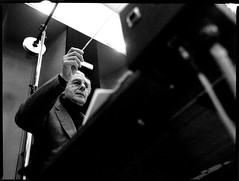

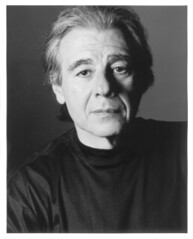 discography
''Film and television scores (film directors in parentheses): Rhino (I. Tors), 1964; The Liquidator (J. Cardiff), 1966; Mission: Impossible, 1966–73 [TV]; Murderers' Row (H. Levin), 1966; Cool Hand Luke (S. Rosenberg), 1967; The Fox (M. Rydell), 1967; Bullitt (P. Yates), 1968; Hell in the Pacific (J. Boorman), 1968; Sol Madrid (B.G. Hutton), 1968; Che! (R. Fleischer), 1969; Kelly's Heroes (Hutton), 1970; Dirty Harry (D. Siegel), 1971; The Hellstrom Chronicle (W. Green), 1971 [documentary]; Enter the Dragon (R. Clouse), 1973; The Four Musketeers (R. Lester), 1973; Magnum Force (T. Post), 1973; Voyage of the Damned (Rosenberg), 1975 The Eagle Has Landed (J. Sturges), 1976; The Amityville Horror (Rosenberg), 1978; Rollercoaster (J. Goldstone), 1979; The Competition (J. Oliansky), 1980 [incl. song ‘People Alone’]; The Osterman Weekend (S. Peckinpah), 1983; The Sting II (J.P. Kagan), 1983; Bad Medicine (H. Miller), 1985; Black Moon Rising (H. Cokliss), 1986; The Fourth Protocol (J. Mackenzie), 1987; Face to Face, 1990; The Beverly Hillbillies (P. Spheeris), 1993; Money Talks (B. Ratner), 1997; Rush Hour (Ratner), 1998 Orch: Gillespiana, ballet, 1961; Jazz Faust, ballet, 1963; Dialogues, jazz qnt, orch, 1969; Improvisations, jazz soloists, orch, 1969; Pulsations, elec pf, jazz band, orch, 1971; Tropicos, chbr orch, 1983; Gui Conc., 1984; Pf Conc.; Conc., tpt, perc, wind orch; Conc., vn, vc, orch Inst: Suite, tpt, brass, 1961; The Ritual of Sound, 15 insts, 1962; Canons, str qt, 1969; Variants on a Madrigal of Gesualdo, 13 insts, 1969; Continuum, hp, 1970; Capriccio, cl, str, 1981; many works, arrs., for jazz ens Vocal: Jazz Suite on the Mass Texts, jazz band, 1965; The Rise and Fall of the Third Reich, orat, 1967; Rock Requiem, 1970; Madrigals for the Space Age, nar, vv, 1976''
Sources:
discography
''Film and television scores (film directors in parentheses): Rhino (I. Tors), 1964; The Liquidator (J. Cardiff), 1966; Mission: Impossible, 1966–73 [TV]; Murderers' Row (H. Levin), 1966; Cool Hand Luke (S. Rosenberg), 1967; The Fox (M. Rydell), 1967; Bullitt (P. Yates), 1968; Hell in the Pacific (J. Boorman), 1968; Sol Madrid (B.G. Hutton), 1968; Che! (R. Fleischer), 1969; Kelly's Heroes (Hutton), 1970; Dirty Harry (D. Siegel), 1971; The Hellstrom Chronicle (W. Green), 1971 [documentary]; Enter the Dragon (R. Clouse), 1973; The Four Musketeers (R. Lester), 1973; Magnum Force (T. Post), 1973; Voyage of the Damned (Rosenberg), 1975 The Eagle Has Landed (J. Sturges), 1976; The Amityville Horror (Rosenberg), 1978; Rollercoaster (J. Goldstone), 1979; The Competition (J. Oliansky), 1980 [incl. song ‘People Alone’]; The Osterman Weekend (S. Peckinpah), 1983; The Sting II (J.P. Kagan), 1983; Bad Medicine (H. Miller), 1985; Black Moon Rising (H. Cokliss), 1986; The Fourth Protocol (J. Mackenzie), 1987; Face to Face, 1990; The Beverly Hillbillies (P. Spheeris), 1993; Money Talks (B. Ratner), 1997; Rush Hour (Ratner), 1998 Orch: Gillespiana, ballet, 1961; Jazz Faust, ballet, 1963; Dialogues, jazz qnt, orch, 1969; Improvisations, jazz soloists, orch, 1969; Pulsations, elec pf, jazz band, orch, 1971; Tropicos, chbr orch, 1983; Gui Conc., 1984; Pf Conc.; Conc., tpt, perc, wind orch; Conc., vn, vc, orch Inst: Suite, tpt, brass, 1961; The Ritual of Sound, 15 insts, 1962; Canons, str qt, 1969; Variants on a Madrigal of Gesualdo, 13 insts, 1969; Continuum, hp, 1970; Capriccio, cl, str, 1981; many works, arrs., for jazz ens Vocal: Jazz Suite on the Mass Texts, jazz band, 1965; The Rise and Fall of the Third Reich, orat, 1967; Rock Requiem, 1970; Madrigals for the Space Age, nar, vv, 1976''
Sources:
Michael J. Budds. "Schifrin, Lalo." Grove Music Online. Oxford Music Online. 10 Mar. 2012 <http://www.oxfordmusiconline.com/subscriber/article/grove/music/24853>.











